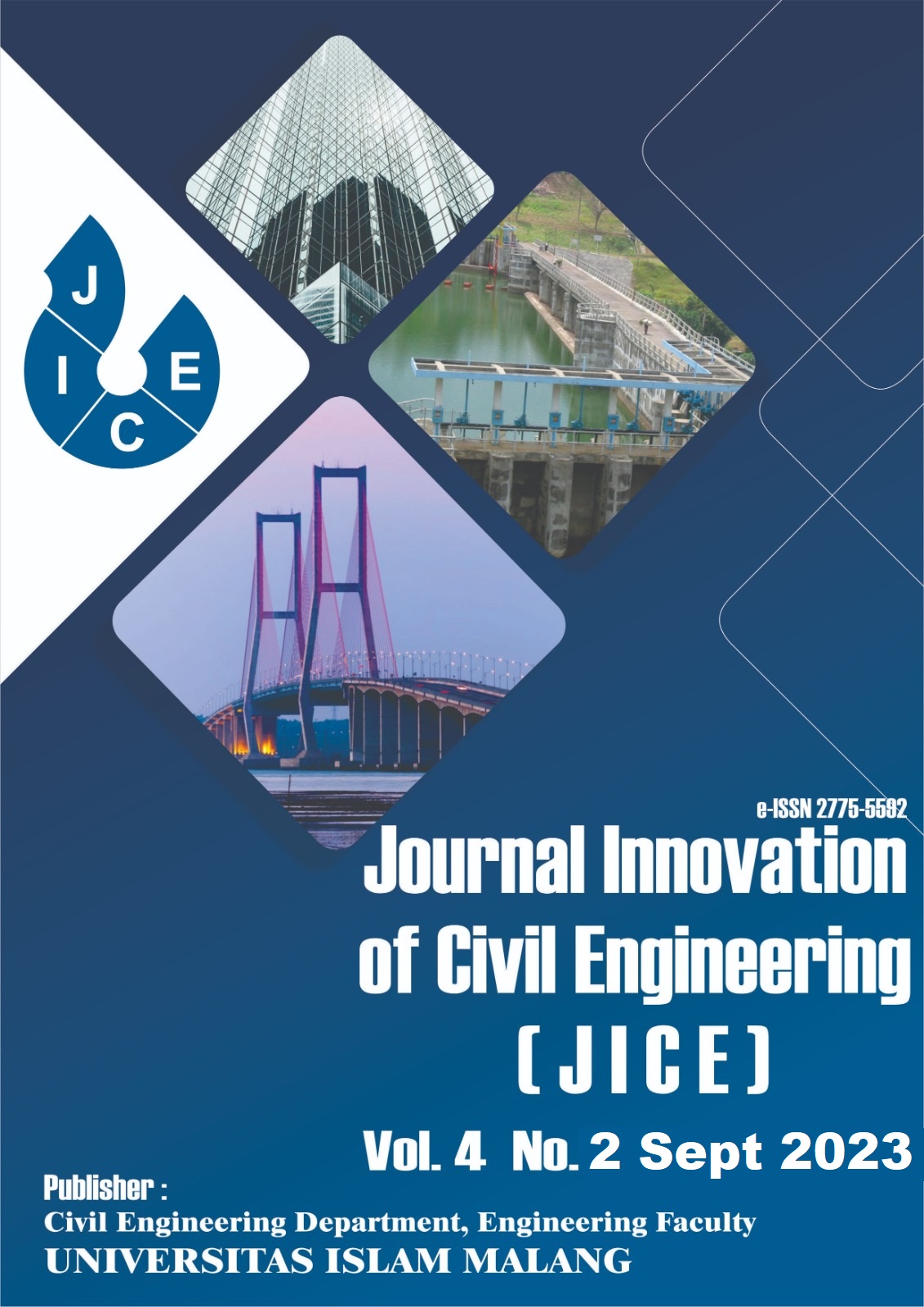ANALYSIS OF OCCUPATIONAL SAFETY AND HEALTH (K3) RISK IN THE CONSTRUCTION OF SAMPANG SOUTH RING ROAD (JLS) USING HAZID HIRA AND HAZOP METHODS
DOI:
https://doi.org/10.33474/jice.v4i2.20553Abstract
Occupational Health and Safety (K3) is all engineering activities to support construction work in realizing the fulfillment of security, safety, health, and sustainability standards that ensure construction engineering safety, workforce safety and health, public safety, and environmental safety. This research was conducted to determine the risks of work accidents, identify technical implementation risk factors, and determine responses to the most dominant risks. The method used is HIRA, HAZID, and HAZOP. In HIRA, 4 dominant risk variables may occur during the construction of the South Ring Road (JLS) Sampang, namely: (X4.4), (X5.3), (X6.1), and (X6.2). To determine whether or not the variable data used to use the HAZID method is to use a preliminary questionnaire which is distributed before the main questionnaire. the correlation value of each variable is obtained or it is called the r count, then the r count can be compared with r table. To determine the risk response and recommendations that may occur using the HAZOP method is to use literature studies from previous journals as well as occupational safety and health standards. Thus, 19 recommendations for controlling the 4 dominant risks that may occur in the South Ring Road (JLS) Sampang project are obtained.
Keywords: Occupational Safety and Health (K3), HAZID Method, HIRA Method, and HAZOP Method
Downloads
Published
How to Cite
Issue
Section
License
Copyright (c) 2023 hazin mukti, Fairus Zabadi

This work is licensed under a Creative Commons Attribution-ShareAlike 4.0 International License.
Journal Innovation of Civil Engineering (JICE) with registration number ISSN 2775-5592 (online) published by Universitas Islam Malang by applying for copyright and License.
Copyright:
- Copyright in each text is the property of the author.
- The author agrees that JICE has the right to the first license issued with a Creative Commons Attributions-ShareAlike 4.0 International License.
- The author can write the article separately through non-exclusive distribution with other versions related to the first published article in the Journal Innovation of Civil Engineering (JICE).
License:
- Attribution: You must give appropriate credit, provide a link to the license, and indicate if changes were made. You may do so in any reasonable manner, but not in any way that suggests the licensor endorses you or your use.
- ShareAlike: If you remix, transform, or build upon the material, you must distribute your contributions under the same license as the original.
- No additional restrictions: You may not apply legal terms or technological measures that legally restrict others from doing anything the license permits.
You are free to:
- Share a copy and redistribute this material in any form or format.
- Change and make derivatives of this material for any purpose, including commercial interests.
The licensor cannot revoke the above conditions as long as the authors comply with the terms of this license.




